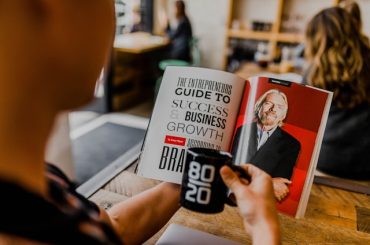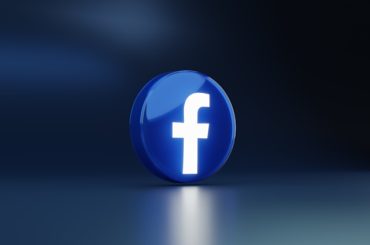Guerrilla marketing is an advertising strategy that uses unconventional and low-cost tactics to promote a product, service, or brand. It often involves creative and unexpected approaches to capture the target audience’s attention and generate buzz around the campaign.
Guerrilla marketing can effectively allow small businesses or start-ups with limited budgets to gain exposure and compete with larger companies. However, it can also be risky as some tactics may be seen as controversial or offensive to some people. Therefore, it is essential to carefully consider the target audience and potential consequences before launching a guerrilla marketing campaign.
Here are some steps to consider when developing a guerrilla marketing strategy:
- Identify your target audience: Determine who your ideal customer is and where they spend their time, both online and offline.
- Define your goals: Determine what you want to achieve with your guerrilla marketing campaign, such as increasing brand awareness or driving sales.
- Brainstorm creative ideas: Think outside the box and develop unique and unexpected tactics that will capture the attention of your target audience.
- Evaluate risks and potential impact: Consider your guerrilla marketing tactics’ potential risks and consequences, and ensure they align with your brand values and won’t offend your target audience.
- Develop a budget: Determine how much money you can allocate to your guerrilla marketing campaign and determine the most cost-effective tactics.
- Execute and measure results: Launch your campaign and track its effectiveness, making adjustments as needed based on feedback and data analysis.
Some popular guerrilla marketing tactics include creating viral social media campaigns, sponsoring public events or stunts, and using street art or guerrilla advertising techniques. The key is to be creative and memorable while staying true to your brand values and message.
Guerrilla marketing tactics
Here are some common guerrilla marketing tactics that businesses can use to promote their products or services:
- Street art: Use graffiti or street art to promote your brand in urban areas where people will likely see it.
- Public stunts: Create a memorable experience for your target audience by staging an unexpected, attention-grabbing public event or performance.
- Branded merchandise giveaways: Offer free branded merchandise like stickers or T-shirts to create a buzz and encourage word-of-mouth marketing.
- Social media campaigns: Create viral social media campaigns that encourage user-generated content or use hashtags to generate buzz and increase brand awareness.
- Flash mobs: Organize a group to perform a choreographed routine publicly to draw attention to your brand.
- Pop-up shops: Set up temporary retail locations in high-traffic areas to showcase your products or services and generate buzz.
- Guerrilla advertising: Use unconventional advertising methods, such as projections or chalk art, to promote your brand in public spaces.
Guerrilla marketing tactics can effectively generate buzz and reach a wider audience, especially for businesses with limited marketing budgets. However, ensuring that your tactics align with your brand values and won’t offend or alienate your target audience is important.
Guerrilla marketing examples
Here are some examples of successful guerrilla marketing campaigns:
- IKEA: In Norway, IKEA created a bus stop ad that featured a fully furnished living room inside the bus stop. Passersby could sit on the couch, read a book, and watch TV. This campaign was a creative way to showcase IKEA’s products and create a memorable experience for commuters.
- Red Bull: Red Bull is known for its creative marketing campaigns, and one of its most memorable stunts was the Red Bull Stratos Jump. In 2012, Felix Baumgartner broke the world record for the highest skydive by jumping from a helium balloon at the edge of space. Red Bull sponsored the event, which generated millions of views and earned extensive media coverage.
- National Geographic: To promote their show “Genius,” National Geographic created a mural of Albert Einstein using dry-erase boards on a building in New York City. Passersby could take a photo with the mural and share it on social media, generating buzz for the show.
- KitKat: KitKat created a campaign in which they replaced park benches with giant KitKat bars. The bars were wrapped in packaging that looked like the traditional KitKat packaging, creating a unique and memorable experience for park-goers.
- Carlsberg: In a busy square in Belgium, Carlsberg created a billboard with the message “Probably the best poster in the world.” When people approached the billboard, they were offered a free Carlsberg beer, creating a fun and engaging experience for consumers.
These are just a few examples of successful guerrilla marketing campaigns that have generated buzz, media coverage, and increased brand awareness for businesses.
Case study of successful guerrilla marketing strategy
One example of a successful guerrilla marketing campaign is the “Fearless Girl” statue created by State Street Global Advisors in New York City in 2017.
State Street Global Advisors, a global asset management company, created a bronze statue of a young girl standing confidently with her hands on her hips, facing the famous “Charging Bull” statue on Wall Street. The statue was installed on the eve of International Women’s Day to draw attention to the lack of gender diversity in corporate leadership positions and to promote State Street’s SHE fund, which invests in companies with more gender-diverse leadership.
The statue quickly went viral on social media, with people sharing photos and videos of the statue and its message. It generated extensive media coverage and symbolized female empowerment and gender equality.
The campaign was a massive success for State Street, as it generated millions of dollars in earned media and increased visibility for its SHE fund. It also raised awareness about the importance of gender diversity in corporate leadership positions, a cause that aligns with State Street’s values.
The “Fearless Girl” statue is an excellent example of how guerrilla marketing can promote a cause or message while generating buzz and media coverage for a brand. State Street effectively communicated its message and promoted its brand to a broader audience by creating a memorable and impactful visual display in a high-traffic area.











